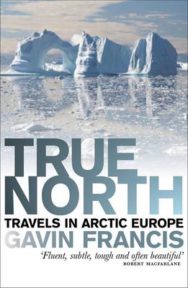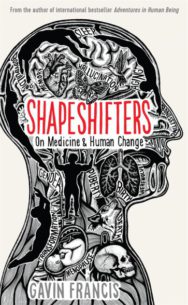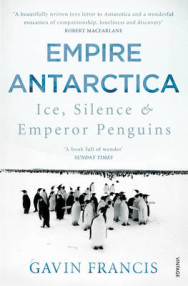‘In growth and in recovery, in adapting and in ageing, our bodies ineludibly change form – and with sleep, memory and learning, so do our minds.’
In this excerpt from his latest book, doctor and writer Gavin Francis talks about how to be alive is to be in perpetual metamorphosis.
Transformation
‘From so simple a beginning endless forms most beautiful and
most wonderful have been, and are being, evolved.’
Charles Darwin, On the Origin of Species.
There’s a park near my medical office lined with cherry trees and elms that undergo beautiful annual transformations. If there’s time on my commute I’ll stop at a bench and watch them for a few moments. Winter brings storms, and the last few years have seen several of the tallest elms blown over. When they fall down, tearing up their roots, deep coffin-sized gashes open in the earth. Around Easter the branches thicken with a green so enchanting I see why some imagine it as the colour of heaven. The blossoming of the cherry trees in spring strews the grass with petals, and to take a stroll beneath their branches is to be fêted in pink. The summer air feels ripe and dense – barbecues are lit and babies play on rugs in the shade; acrobats teeter over ropes strung between the tree trunks. But my favourite season is autumn, when the sky feels high, the air pellucid and brittle, and heaps of crimson, auburn and gold gather around my feet. I’ve been appreciating this park for around twenty-five years – it’s adjacent to the medical school where I trained.
Aged eighteen, in the first year of training, I walked through drifts of those leaves to a biochemistry class that I’ve never forgotten – a lecture where I had something approaching a revelation of the intricacy, the interconnectedness, even the wonder of life. It had an inauspicious beginning: projected on the wall was a complex diagram of the haemoglobin molecule. The tutor explained that the chemical which binds oxygen into red blood cells, known as a ‘porphyrin ring’, was essential both to the haemoglobin of blood and the chlorophyll that traps the sun’s energy in leaves. Thanks to porphyrins, she said, life on earth as we know it is possible. Up on the wall, the molecular structure resembled a four-leafed clover, with porphyrin leaves interlocked in an architecture of almost Gothic complexity. Cradled at the core of each of the four leaves was a lava-red atom of iron.
When oxygen binds to the heart of each leaf, she explained, it reddens like an autumn maple; when oxygen is released, it darkens to purple. So far, so biochemical. ‘But this isn’t a static process,’ the tutor added, ‘it’s dynamic and alive.’ The binding of oxygen transforms its cradle; the stress of that transformation pulls a tiny atomic lever which bends the cradles of the other three, encouraging the take-up of more oxygen. This was the first revelation of the elegance of biochemistry, as startling as it should have been obvious: from chlorophyll to haemoglobin, molecules cooperate with one another in order to sustain life.
Watching the diagram, I tried to imagine billions of molecules of my own haemoglobin, their shapes shifting as they gathered oxygen in my lungs with each breath. Then the beating of my heart pushing on rivers of blood to my brain, my muscles, my liver, where the same shift would occur in reverse. It seemed a transformation as vital and as perennial as the annual growth and fall of leaves, implausible, somehow, that it could be happening moment to moment throughout my body. ‘The more the tissues need oxygen the more acid they become,’ she went on; ‘that acidity deforms haemoglobin into releasing oxygen exactly in proportion to how much it’s needed.’ This was the second revelation of the morning: blood is exquisitely calibrated to meet varying oxygen requirements across the body. She began explaining the ways in which foetal haemoglobin is subtly enhanced to draw oxygen across the placenta from the mother, but I was already so caught up in the first two realisations that I hardly heard her.
I felt the air charge with reverence, the unfolding of a kind of joy: that such balance existed among the tumult of body chemistry seemed strangely beautiful, though at the same time inevitable.
Transformation is one of the most ancient and resonant themes in literature and art: two thousand years ago in the Metamorphoses, the Latin poet Ovid painted nature and mankind as a seething maelstrom where all matter, animate and inanimate, was caught up in cycles of change ‘like pliant wax which, stamped with new designs, does not remain as it was, or keep the same shape … everything is in a state of flux, and comes into being as a transient appearance’. Ovid closed his poem with a declaration of the fraternity of life, and a passionate plea to treat all beings with compassion. That compassion too is at the heart of clinical practice – medicine could be described as the alliance of science with kindness. This book is a celebration of dynamism and transformation in human life, both as a way of thinking about the body, and as a universal truth.
The great cavalcade of the cosmos is in evolution around us: the universe is expanding, the gyre of the galaxy spinning, the earth wheels through its orbit and the moon gets more distant with every year. A tilt in our planet’s axis gives us the swing of the seasons; more than a trillion tides have already rinsed earth’s shores. The churn of plate tectonics is renewing the crust of the earth. ‘Nothing stays the same for long’ is a truism that, depending on your perspective, is either a curse or a consolation. ‘You can’t step into the same river twice’, said Heraclitus – because our bodies are ceaselessly renewed, even as each river’s waters are renewed.
To be alive is to be in perpetual metamorphosis. The borders of our selves are porous – shaped and recomposed by elements of our environment. River water was once sea spray; next year it could flow in your neighbour’s blood. The water in your brain once fell as rain on ancient landscapes, and surged in the swell of long-gone oceans. From this perspective, the body is itself a flowing stream, or burning fire: no two of its moments are ever the same. In growth and in recovery, in adapting and in ageing, our bodies ineludibly change form – and with sleep, memory and learning, so do our minds. From the crises that may overwhelm us to the transitions between conception and the grave; from the neural flows that weave consciousness to the changes that can be effected through our own willpower and determination, we embody change.
The word ‘patient’ means ‘sufferer’, and to practise medicine is to seek to ease human suffering. Much of my work as a physician takes advantage of those changes that aid us, and tries to slow those that would constrain us. As a writer, I’m interested in change as a metaphor that has preoccupied poets, artists and thinkers for millennia, and as a doctor, I’m interested in the same theme because to practise medicine is to seek positive change, however modest, in the minds and the bodies of my patients.
Shapeshifters: On Medicine & Human Change by Gavin Francis published by Profile Books is available now priced £16.99.
ALSO IN THIS ISSUE
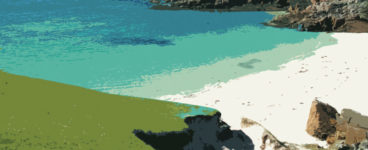
 A Handbook of Scotland’s Coasts
A Handbook of Scotland’s Coasts
‘Inchcolm – almost as delightful as Iona but much less well known or visited, and Raasay – an island …
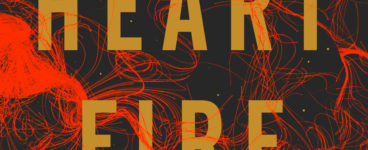
 Heart Fire by Johannes Hartl
Heart Fire by Johannes Hartl
‘This simple and self-evident attitude towards life seems almost strange.’





